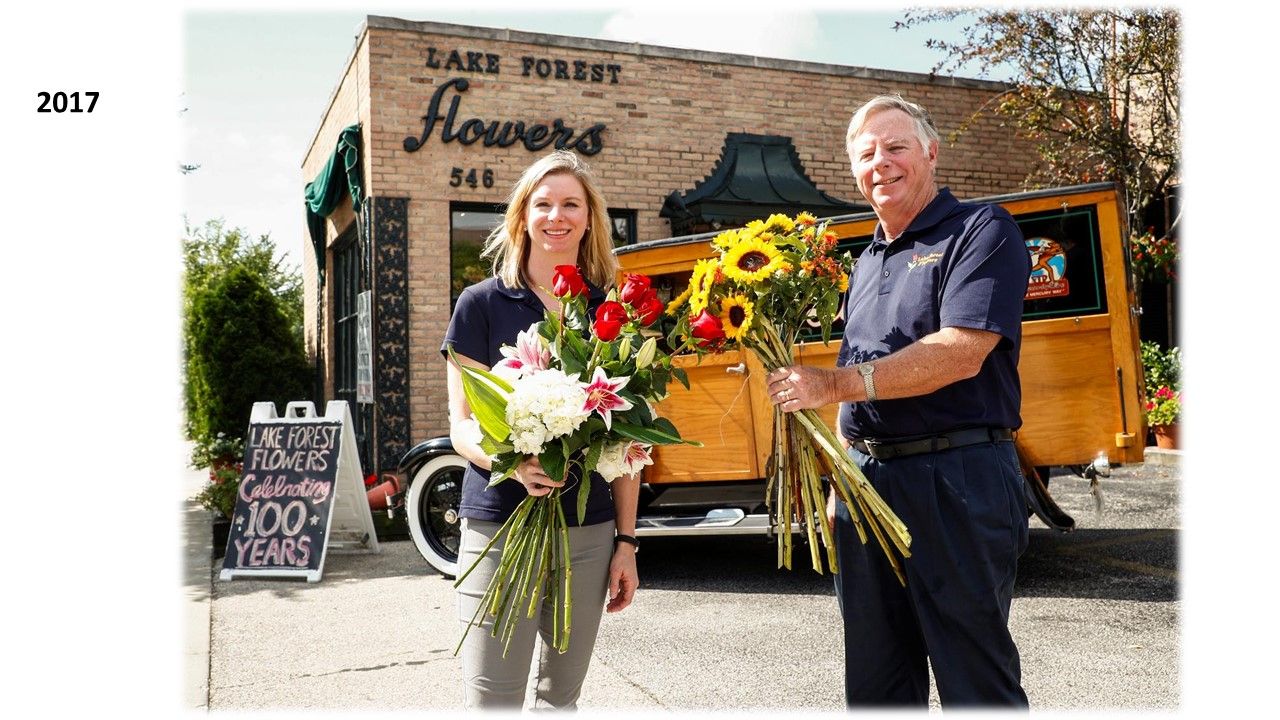Lake Forest Flowers: Growing with the Community

The origins of this business date all the way back to the earliest days of Lake Forest. Frank Calvert was born in Scotland in 1830 and immigrated to Chicago as a young man. He was one of the earliest documented landscape gardeners in the Chicago region, and was drawn in the early 1860s to ply his trade among the beautiful landscapes of the recently incorporated city of Lake Forest. Calvert oversaw and planted the gardens at several of Lake Forest’s earliest estates, like Charles B. Farwell’s Fairlawn, Devillo Holt’s The Homestead, and the H. M. Thompson house.

Frank Calvert established a nursery on the west side of Illinois Road at Rosemary, building a large greenhouse complex there. When the North Shore electric train line came through around the turn of the century, a “Calvert’s” stop was built right next to the nursery, helping facilitate deliveries and pickups.
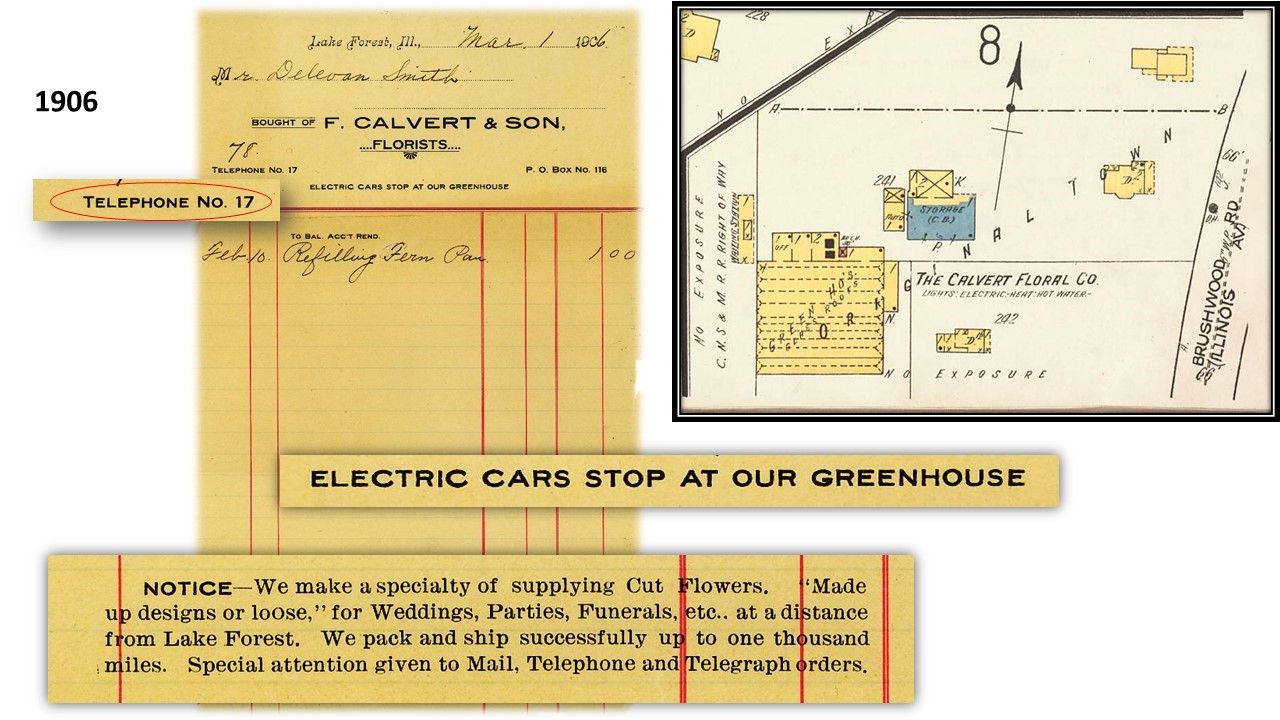
Calvert brought his sons Fred and Edgar into the business, but a few years after Frank’s death in 1909, they sold it. The new proprietor was a German immigrant named Otto Treibwasser, who ran it with his wife. He retained the Calvert name, given that it had been synonymous with the flower business in Lake Forest for decades. You can see from the ads here that it was called Calvert Floral Co., Calvert Greenhouses, and Calvert Florists. One thing that remained consistent was the telephone number – Lake Forest 17, which bespeaks its early origins, given that it was the 17th phone number given out in town.
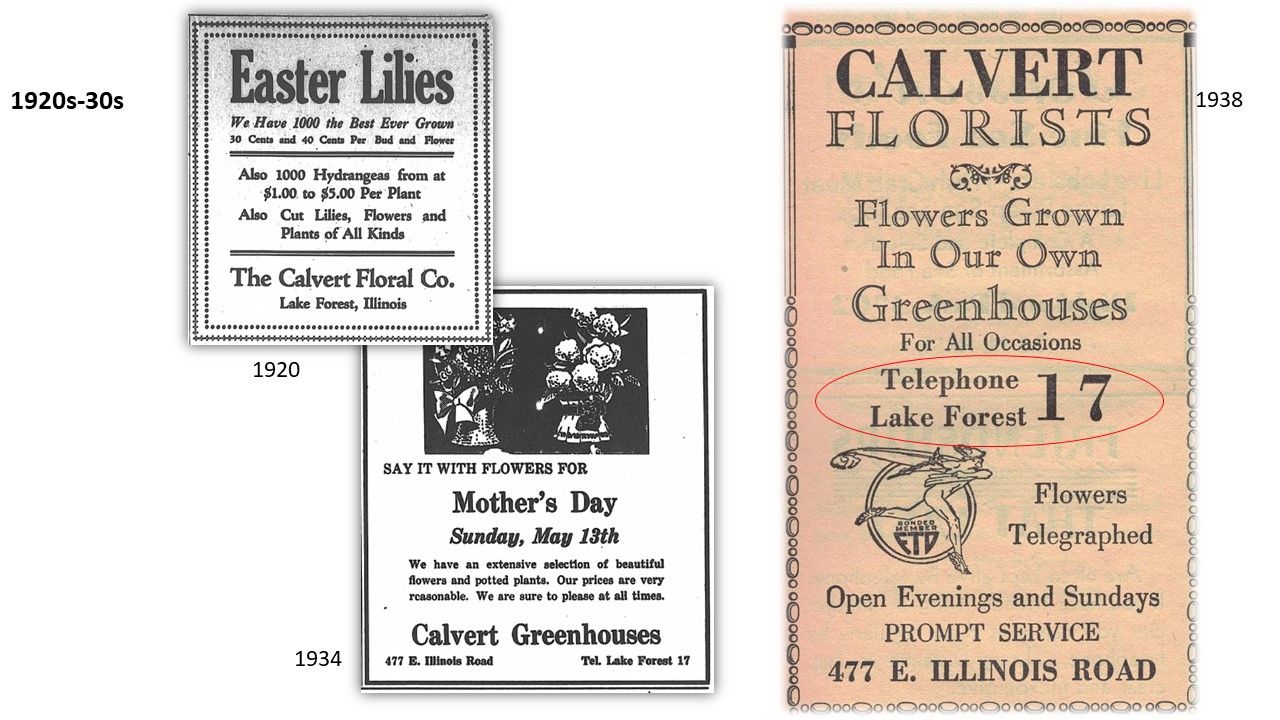
Throughout the late 1920s and early 1930s, Otto Triebwasser attempted to sell the greenhouses, likely due to poor health. He died in 1931 after a long illness. Mrs. Triebwasser ran the business on her own for some years, finally selling by 1933 to W.A. Sheriffs. The next year, Sheriffs was accepted as a member of the Florists’ Telegraph Delivery Association, a retailers’ cooperative that was formed to help people send flowers anywhere even from far away on the same day by using other florists in the network.
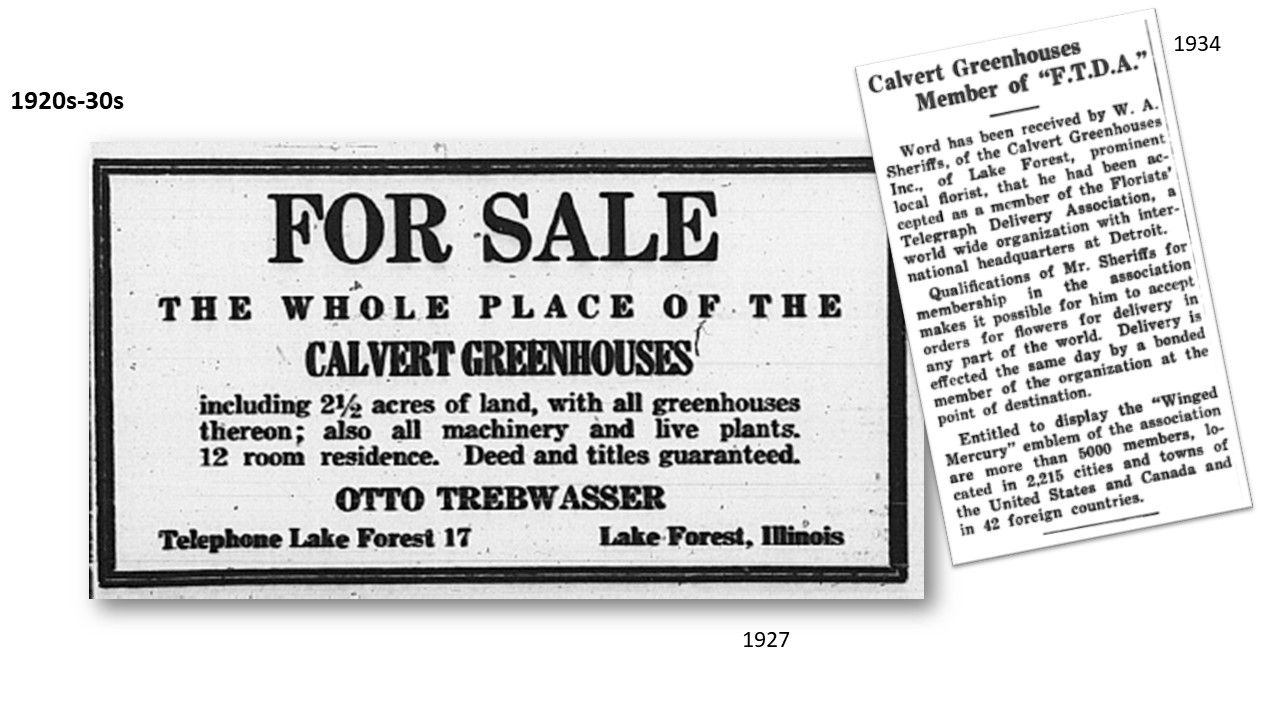
Meanwhile, down the road in Highland Park, a young man named Erwin Dreiske was learning the florist trade from his father, Herman, another German immigrant. By the late 1920s Erwin had taken over the Highland Park shop – you can see an advertisement for it from the 1932 Lake Forester. He also opened a shop in Winnetka.

Now, we haven’t founded any specific record detailing the sale of Calvert’s in Lake Forest to Erwin Dreiske around 1939, and linking them was challenging since Dreiske opened up shop at a different location. However, we do know that in the 1939 telephone directory, Erwin Dreiske is listed at the coveted telephone number Lake Forest 17, and the listings for Calvert’s Greenhouses cease, so the circumstantial evidence is good that some part of the Calvert business was sold to Dreiske that year.

Dreiske’s business was located at three different storefronts in the 1930s and 1940s. First, 279 E. Deerpath, a building knocked down when the addition to The Northern Trust was built. Then, by 1945, at 630 N. Western Avenue, the former Blackler building at the corner of Deerpath and Western. And in 1948, he moved a few doors down to 580 N. Western, where Price Insurance is today. At that time he renamed it the Lake Forest Flower Shop.
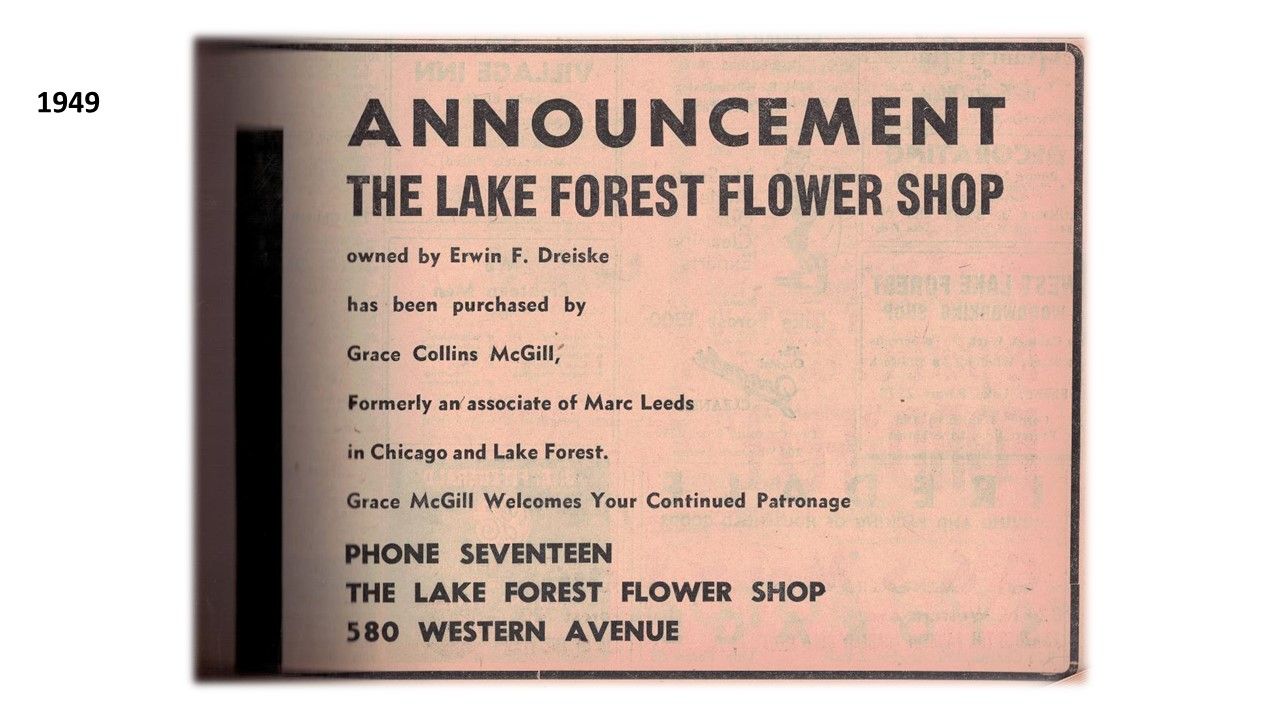
In the fall of 1949, Erwin Dreiske sold his shop to Grace Collins McGill, who had been working with another florist, Marc Leeds, in Chicago and Lake Forest. Her father was Judge Loren Collins, formerly Illinois Speaker of the House, and judge of the Circuit Court in Cook County. Grace was born in Puerto Rico in 1909 when her father was serving as an associate justice of the Supreme Court of the Panama Canal Zone.

Around 1955, Grace McGill moved the shop further south on Western Avenue yet again, to its current location, where she shared a new building at the corner of Illinois and Western with North Shore Catering.

Since we’ve come to the final move, I thought it would be fun to show a map of the businesses locations through the years – starting with the Calvert greenhouses at Illinois and Rosemary, then to 279 Deerpath, then the corner of Deerpath and Western, down the road at 580 N. Western, and finally to the current location at 546 N. Western.

Here you can see some photos of the shop exterior taken in 1969. Grace McGill was active in the community, serving on the board of the Lake Forest Chamber of Commerce and as a longtime member of the Lake Forest Woman’s Club.
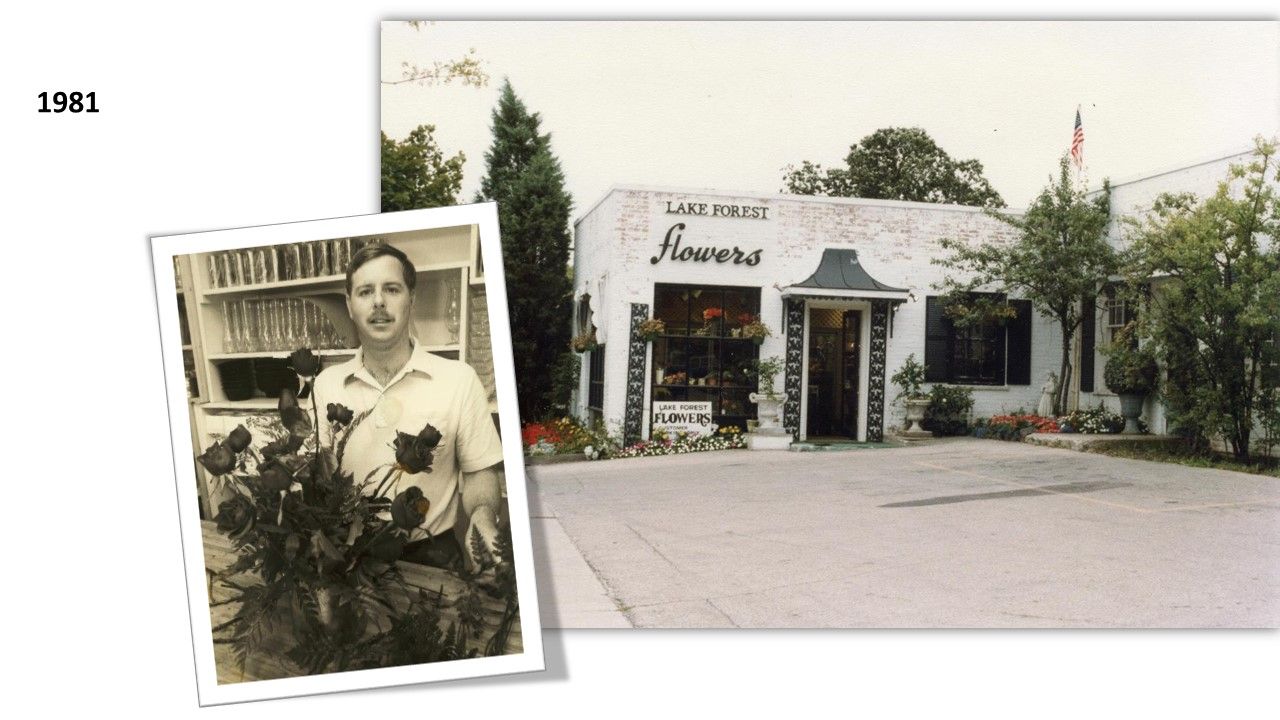
Though he kept Grace McGill’s “flowers” sign, over the next several years John Looby made some changes to the building. They quickly grew weary of constantly painting and sandblasted the white paint off the exterior.
Originally the entire business was contained in what is now the showroom. Then North Shore Catering moved out and Lake Forest Flowers took over their space. Now John’s office is in the former walk-in freezer for the caterers. No need to feel sorry for him, though – North Shore Catering needed a very large freezer because they were a pioneer in the field of fast frozen hors d’oeuvres, an idea that according to Mr. Looby they eventually sold to Kraft.
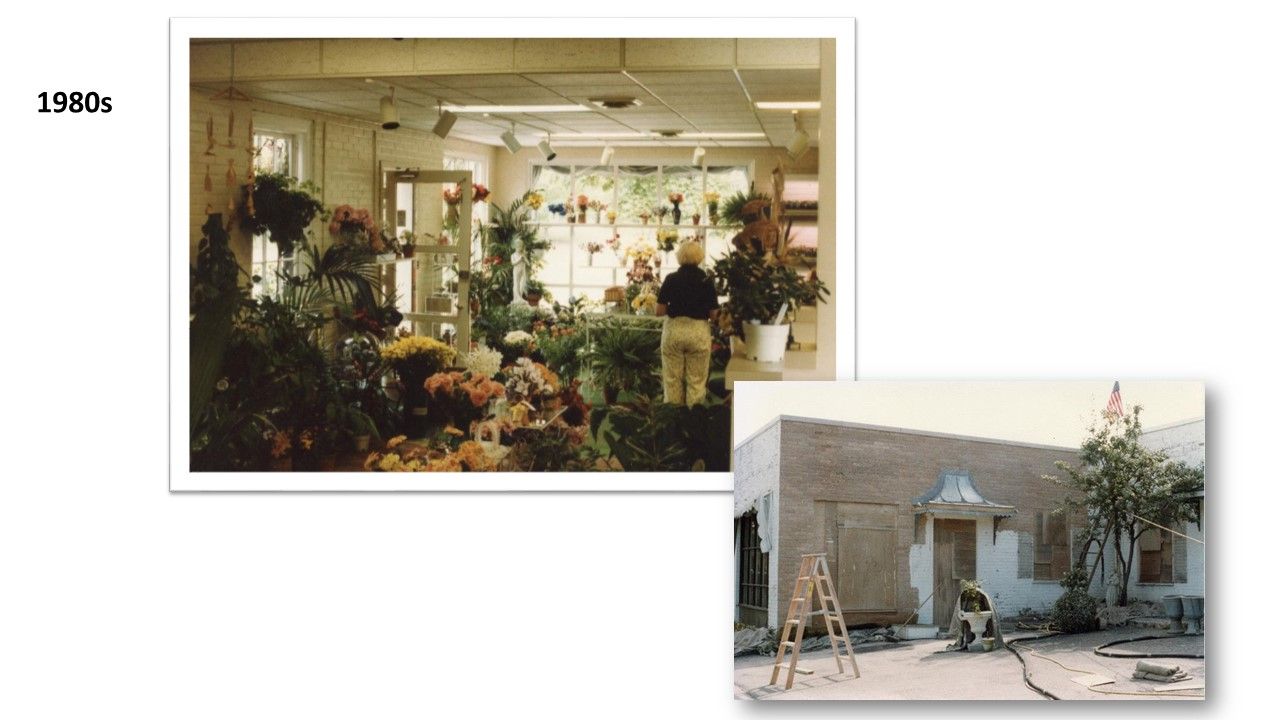
Though no longer working at a high school, John Looby continued to teach and mentor high school students, giving hundreds of them their first jobs over the years as delivery persons.
When the Loobys bought the business in the 1980s, Lake Forest Flowers delivered mainly to Lake Forest and Lake Bluff. Now, their delivery radius reaches as far north as Kenosha, Wis., as far west as Schaumburg and south into Chicago.
Also in the 1980s, weather and location limited much of what the business could sell, with carnations, roses, gladiolas, and other flowers grown in the Chicagoland region dominating. Now, any type of flower can be shipped from all over the world at any time of year.
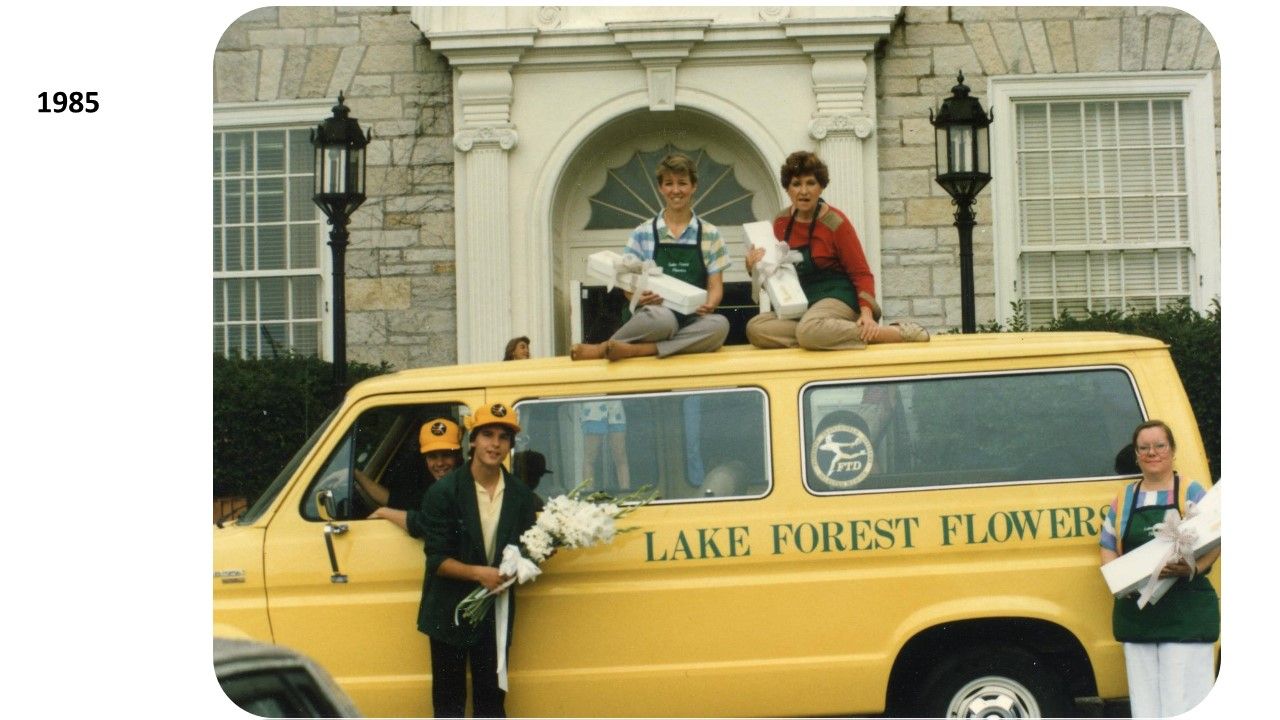
John Looby and Lake Forest Flowers both became further integrated into the fabric of the Lake Forest community. Here you can see a couple of their yearly entries in the Lake Forest Day parade. Looby also served on the board of the Lake Forest-Lake Bluff Chamber of Commerce, has perfect attendance over 40 years as a member of the Rotary Club, and has the distinction of being Lake Forest’s longest-serving alderman – he filled out another’s term before elected three times as per term limits.
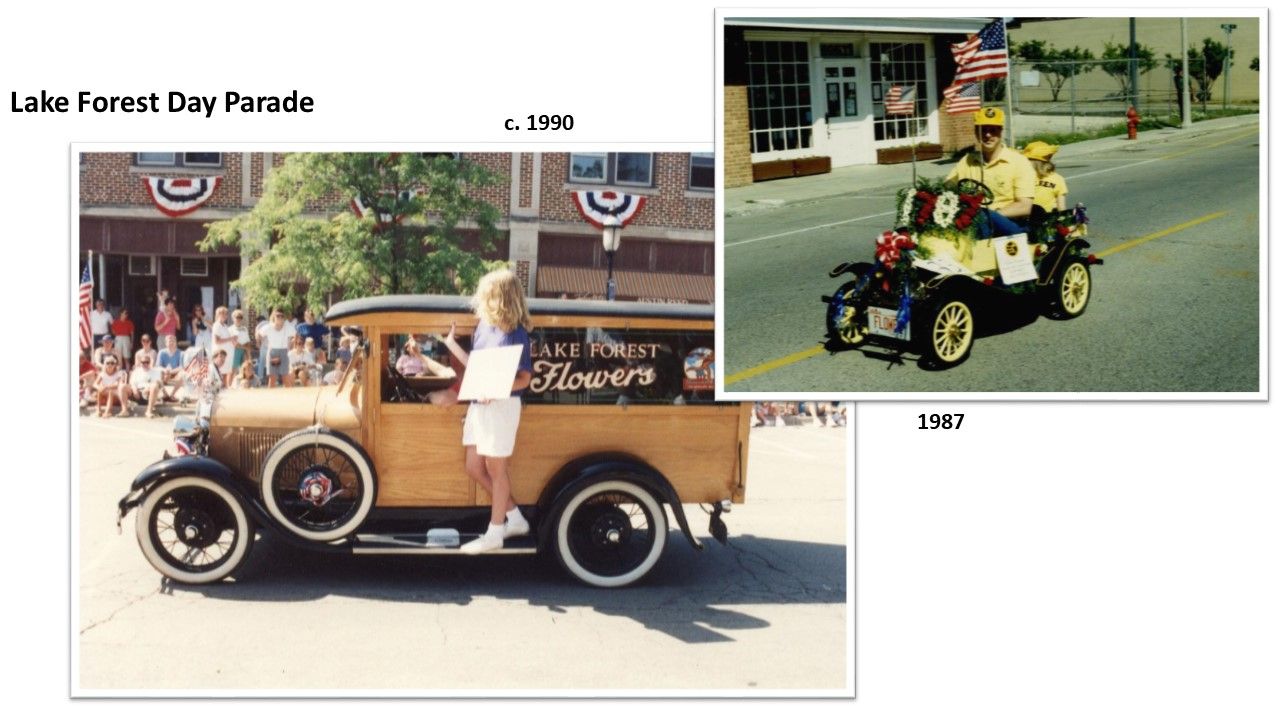
Lake Forest Flowers became a family affair. The Looby children, John, Eileen, and James, grew up helping out in the shop. They would walk over from School of St. Mary if they didn't have an after-school activity, and process flowers, put away supplies and clean up and ride around with the delivery staff. Once, when she was very small, Eileen fell asleep in a flower box and one of the employees almost discarded her along with the box – her dad came running out, “Stop, my kid’s in there!”

John is an FTD master florist and very active in various professional associations, serving as president of the FTD, among others. As we noted earlier, FTD originally stood for Florists Telegraph Delivery but now rather than telegraph, the “T” stands for Transworld. You can see the whole family attended the FTD conventions all across the country.
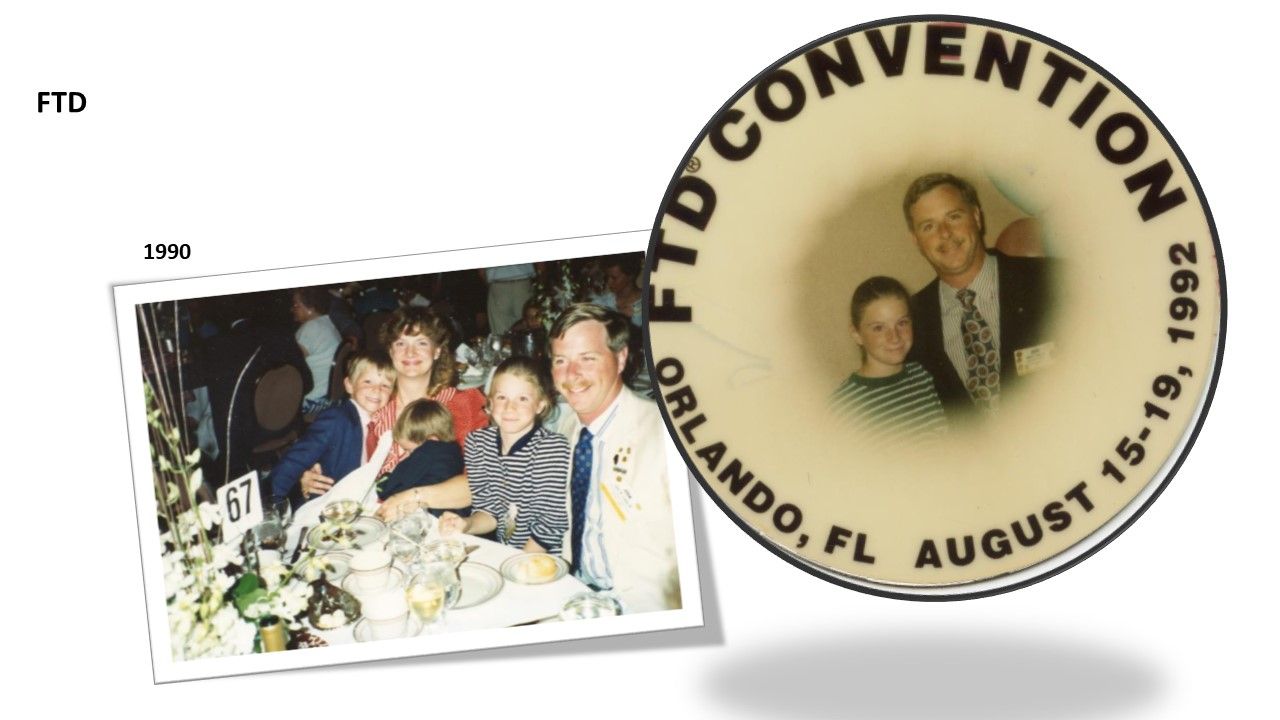
After growing up around the business, Eileen got her BA from Purdue in horticultural production and marketing with the goal of running large greenhouses. Soon, she had a change of heart, determining she wanted to work on a personal level with people and not just with plants. In 2002, she joined her father in the business and became the vice-president of Lake Forest Flowers.
Even beyond expansions in available plants and delivery, both John and Eileen have seen changes in the business that parallel changes in our society. Thanksgiving and Easter used to be bigger floral holidays. Hospital stays for births have shrunk, and funerals have ceased to be multi-day affairs, decreasing orders. But Christmas and wedding displays have become bigger, and orders for parties and events have ballooned.
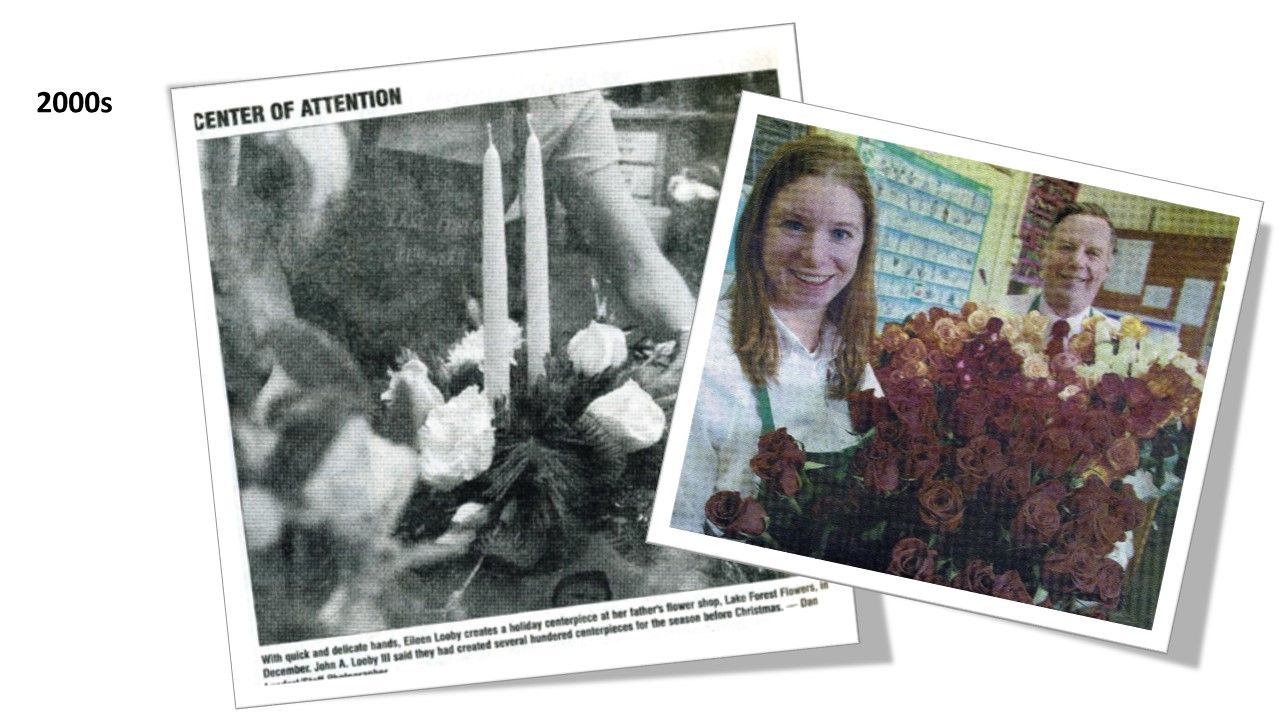
Over many decades in the community, Lake Forest Flowers has grown with local families, from prom to weddings to decorating a new home for Christmas to births and through the cycle again – a modern boutique business providing old-style service. Through changes over the years in styles, location, and ownership, the language of flowers in eliciting emotions has remained constant.
